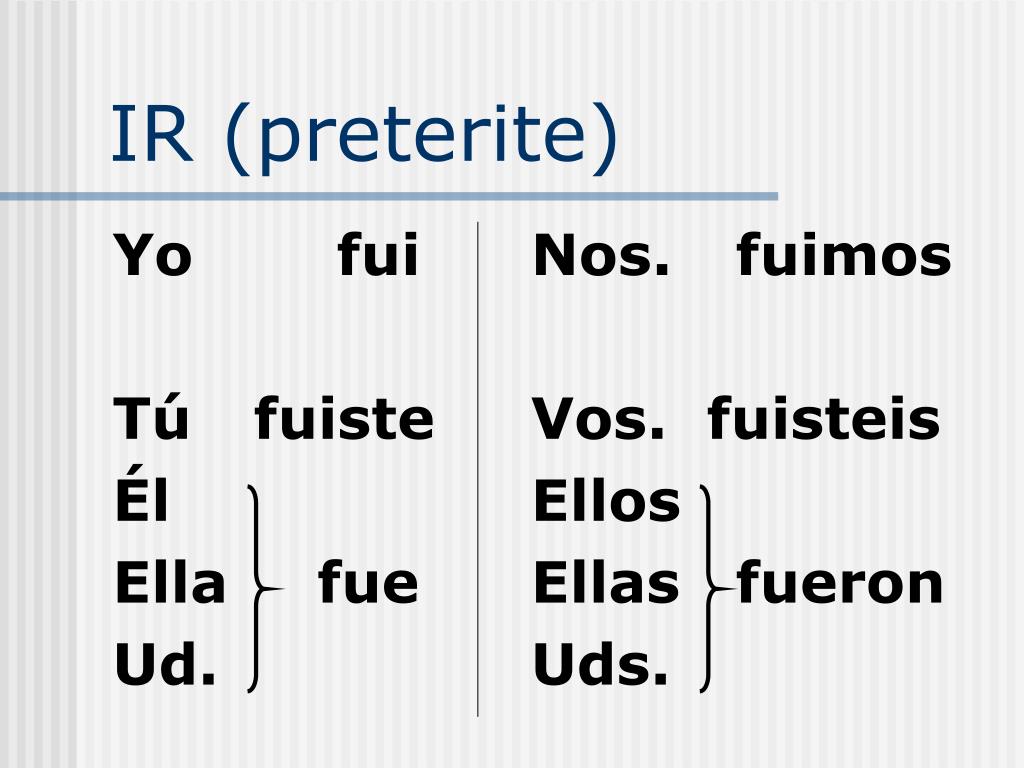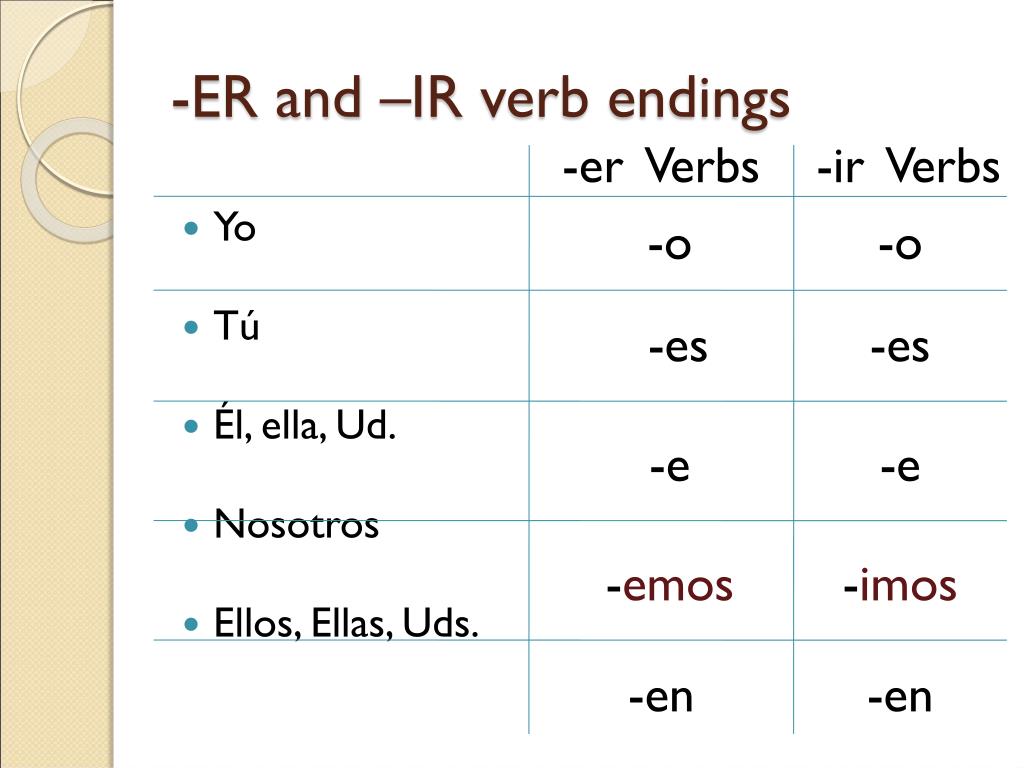

Less conjugations to memorise – that’s a win! Preterite verbs ending in -ar Person The good news is there are only two sets of endings for regular preterite verbs: one for – ar verbs and another one for – er and – ir verbs. How many sets of regular preterite endings are there? add the preterite ending, according to who’s performing the action.drop the infinitive ending, – ar, – er or – ir.
#Ar er and ir preterite endings how to#
Regular preterite verb endings How to conjugate the preterite tense So let’s take a look at how to conjugate verbs in the preterite. Verb endings not only tell you when the action occurs, but it will also give you a better idea of who is performing the action.

It’s used in the same way as the ‘Simple Past’ in English.Īnd because it’s fairly easy to understand, it’s just a matter of learning the preterite endings and you’ll be on your way! The preterite is a great one to start with as it’s used to talk about past events that have been completed – such as what you got up to on the weekend or on holiday. With five different past tenses in Spanish, the idea of learning them all can be daunting! That’s why we recommend starting with the most commonly used tense – the preterite ( pretérito indefinido). Once you’ve learned the basics of verb conjugation in the present tense, you’ll quickly realise that the next important grammar step is conjugating verbs in the past tense.Īfter all, trying to describe your weekend without knowing the Spanish past tense endings is practically impossible! The preterite is probably the first Spanish past tense you’ll learn, as it’s used to talk about past events which have been completed.


 0 kommentar(er)
0 kommentar(er)
